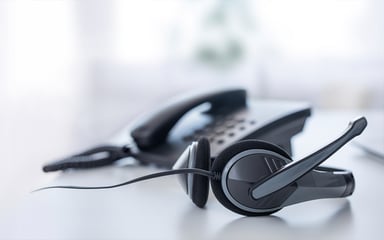Apple Call Screening for iPhones
Apple iOS 26 Call Screening
Apple’s release of iOS 26 Call Screening changes how iPhones handle calls from unknown numbers. Instead of letting these calls ring or silencing them outright, the system intercepts them. Callers are prompted to state their name and reason for calling, and that response is transcribed on the recipient’s screen in real time. Users then choose to answer, ignore, or block.
The feature expands on Silence Unknown Callers by giving users call information before answering. Apple’s iOS 26 documentation notes that it functions like Google’s Call Screen on Pixel devices, but this is the first time it has been included as a standard feature on iPhones.
For iPhone Users: Less Spam, More Control
For consumers, the change is straightforward. Spam and robocalls are less disruptive. Legitimate but unfamiliar callers, such as a delivery driver or a doctor’s office, can still get through, but only after identifying themselves.
There are caveats. Call screening depends on what the caller says, which means spammers could still bluff their way past. Some regions are not yet supported, and legitimate calls from new numbers may still be screened, creating friction in time-sensitive situations.
For Marketers and Sales Teams: A Potential Outbound Barrier
As of 2025, iPhones account for 55–58% of the U.S. smartphone market, which means call screening will affect more than half of American users and create new challenges for business outreach. The pressure is compounded by declining performance in outbound calling itself.
Cognism’s State of Cold Calling Report 2025, based on 10,000 calls conducted with We Have A Meeting (WHAM), found that success rates fell from 4.82% in 2024 to around 2.3% in 2025.
Consumer behavior points in the same direction. A Transaction Network Services (TNS) survey found that 75% of Americans never answer calls from numbers they do not recognize. With Apple now adding another screening layer, sales teams may see answer rates decline further if they rely on traditional high-volume approaches.
At the same time, the feature rewards clarity and legitimacy. Calls that are expected and transparent are more likely to succeed. Sales representatives who identify themselves and tie the call to a prior interaction, may have a greater chance of reaching prospects effectively. In this way, Apple is indirectly pushing sales teams toward better practices.

Auto-Dialers
The most significant impact may be on call centers using predictive dialers and auto-dialers, systems that dial multiple numbers simultaneously and connect agents only when someone answers. These tools rely on immediate connections to live agents, but iOS 26 screening occurs before the call is answered. When the system detects no immediate human response during screening, it registers as dead air and drops the call, never reaching the agent.
How Outreach Can Adapt
Marketers and sales teams will need to refine both messaging and strategy:
-
Identify yourself and your company immediately. Cognism’s research shows that successful cold calls average 93 seconds, and calls that exceed five minutes see a 61% drop in success rates.
-
Use email, SMS, or social channels to set expectations before calling. With connection rates already declining, warming prospects across channels is essential.
-
Focus on consent-based engagement. Research indicates that most buyers are more likely to agree to meetings after engaging in relevant, value-driven interactions.
-
Invest in branded caller ID. Industry analysis confirms that caller ID reputation strongly affects answer rates
This shift does not eliminate phone outreach, but it does require a more deliberate approach.
Big Picture
iOS 26 Call Screening reflects a broader move toward permission-based communication. Just as email evolved from unsolicited blasts to opt-in newsletters, phone outreach is being reshaped to reward transparency and trust.
The timing is significant. Since so many Americans use iPhones, at least half of business prospects will have access to call screening.
Data supports a move toward quality over quantity. While high-volume cold calling struggles, higher contact rates are achieved by emphasizing personalized, data-driven targeting. Consumers gain fewer unwanted interruptions, and businesses are incentivized to build trust before dialing.
Calling is still a powerful sales tool, but the increase in privacy tools means that it works best when calls are clear, expected, and tied to real value. Companies that continue to rely on vague or intrusive tactics will increasingly find themselves screened out.
See also:
State Opt Out Requirements
State and Federal Telemarketing Compliance
TCPA Compliant Lead Gen Forms
References
-
Apple’s iOS 26 Documentation: MacRumors
-
Consumer analysis. Trusted Reviews
-
Sales implications. Hiya Blog
-
Cold calling benchmarks. Cognism 2025 Report
-
Predictive dialer performance. Callin.io citing Aberdeen Group





